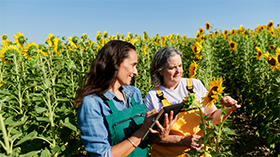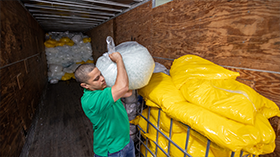
A brighter tomorrow starts with all of us, today.
Here at CooperVision, we’re taking steps in our manufacturing and distribution to operate more sustainably where possible. We are striving to eliminate waste and unnecessary packaging to reduce our environmental impact.1 By facilitating the responsible sourcing of materials,2 reusing waste where we can*3 and starting to offset waste from our products and packaging that cannot yet be reclaimed†, we’re taking strides to improve the well-being of People + Planet.3



A brighter tomorrow starts with all of us, today.
* CooperVision's 2020 Environmental, Social and Governance Report.
† Refers to CooperVision's plastic neutrality initiative with Plastic Bank. Plastic neutrality is established by purchasing credits from Plastic Bank. A credit represents the collection and conversion of one kilogram of plastic that may reach or be destined for waterways. CooperVision purchases credits equal to the weight of plastic in our-one day contact lens orders. One-day contact lens plastic is determined by the weight of plastic in the blister, the lens and the secondary package (outer carton), including laminates, adhesives, and auxiliary inputs (e.g. ink).
‡ Refers to continuous manufacturing improvement processes undertaken by CooperVision to increase efficiency.
§ Natural resources are defined as but not limited to water, nitrogen, natural gas and other organic compounds.
| Renewables are defined as materials or energies that can be sustained indefinitely because of inexhaustible supplies or new growth.
¶ CooperVision uses renewable materials and energies in its manufacturing operations.
** CooperVision’s manufacturing processes are designed to adhere to CooperVision’s internal energy goals and design specifications.
†† Refers to CooperVision's plastic neutrality initiative with Plastic Bank and local community beach clean-up efforts.
References::
1. CVI data on file, 2024.
2. CVI data on file, 2023. CooperVision Supplier Code of Conduct.
3. CVI data on file, 2023.
4. Stegmann, P., Daioglou, V., Londo, M., van Vuuren, D. P., & Junginger, M. (2022). Plastic futures and their CO2 emissions. Nature, 612(7939), 272–276.
5. CVI data on file 2020-2023, including Zero Waste to Landfill Report by Manufacturing Site indicating reclamation efforts by waste stream (2022).









